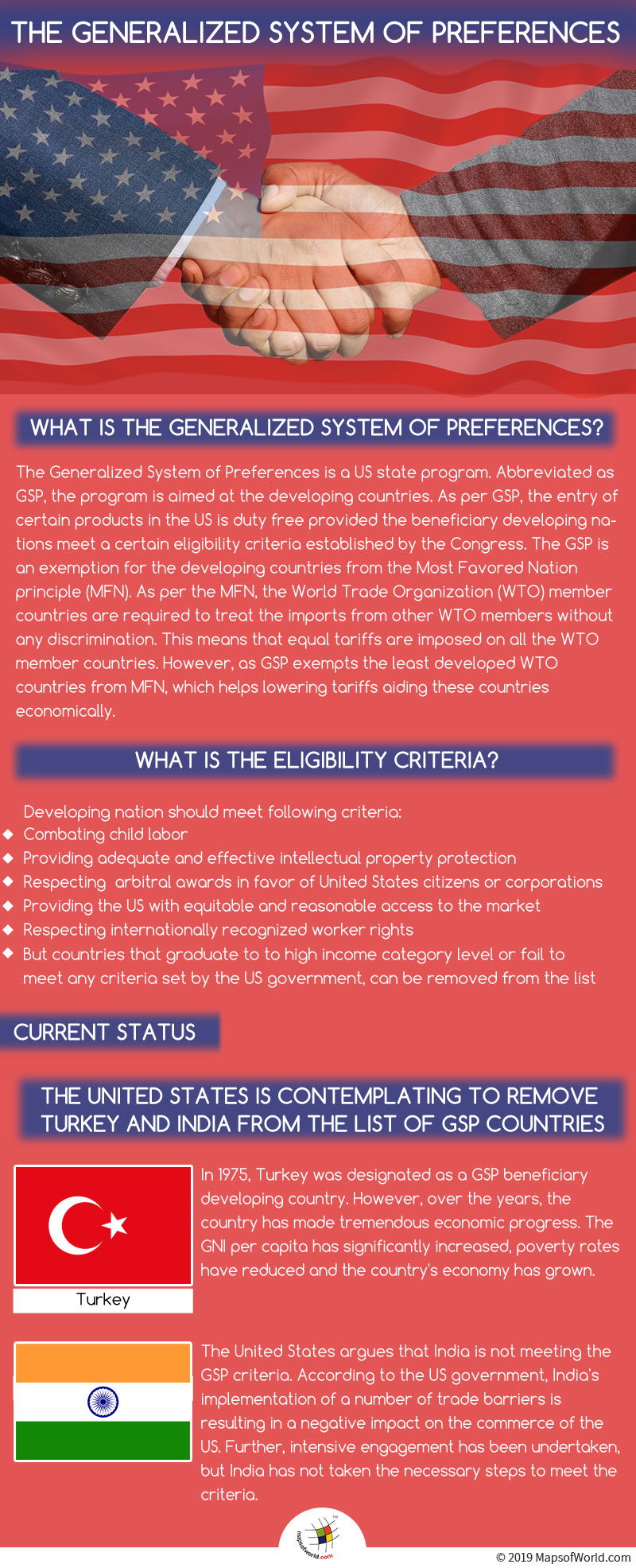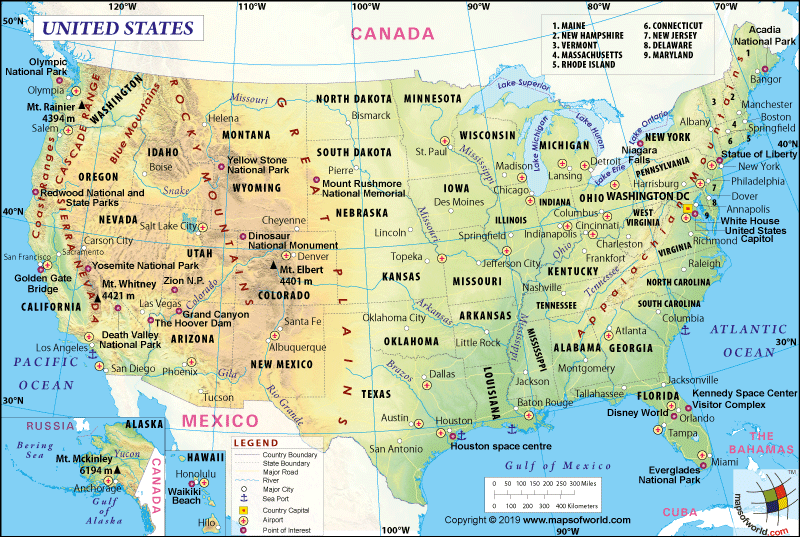What is the Generalized System of Preferences?

The Generalized System of Preferences, which is abbreviated as GSP, is a US program aimed at aiding developing countries. As per GSP, the entry of certain products in the US is duty free provided the beneficiary developing nations meet a certain eligibility criterion. The GSP is an exemption for the developing countries from the Most Favored Nation principle (MFN). As per the MFN, the World Trade Organization (WTO) member countries are required to consider the imports from other WTO members without any discrimination. This means that equal tariffs are imposed on all the WTO member countries. However, as GSP exempts the least developed WTO countries from MFN, this helps lowering tariffs and aiding these countries economically.
The eligibility criteria that a developing nation should meet in order to qualify for the program include combating child labor, providing adequate and effective intellectual property protection, respecting arbitral awards in favor of the citizens or corporations of the US, providing the US with equitable and reasonable access to the market, and respecting internationally recognized rights of the worker.
Some of the products that are covered by the Generalized System of Preferences are meat products, animal husbandry, fisheries, textiles etc. Around 120 developing countries and territories came under the ambit of the GSP, as of 2017. But countries that graduate to high income category level or fail to meet any criteria set by the US government, can be removed from the list.
Current Status
The United States is contemplating to removing Turkey and India from the list of GSP countries. In 1975, Turkey was designated as a GSP beneficiary developing country. However, over the years, the country has made tremendous economic progress. The GNI per capita has significantly increased, poverty rates have reduced and the country’s economy has grown.
Though India is still a developing country, the United States argues that India is not meeting the GSP criteria. According to the US government, India’s implementation of a number of trade barriers is resulting in a negative impact on the commerce of the US. Further, intensive engagement has been undertaken, but India has not taken the necessary steps to meet the criteria.
Know More:
Related Map:
